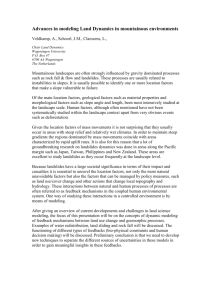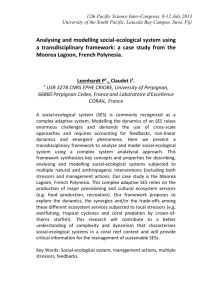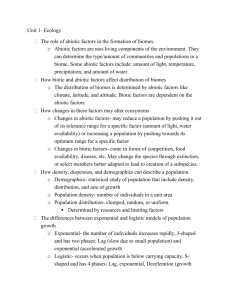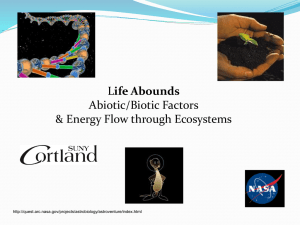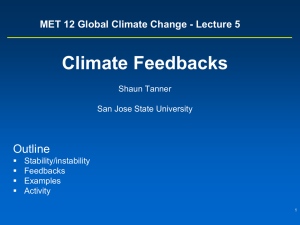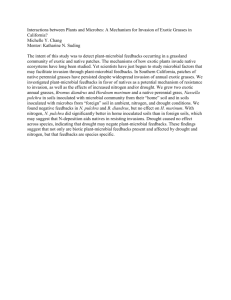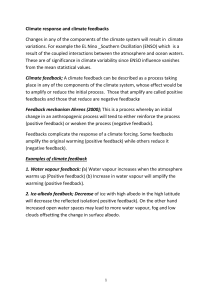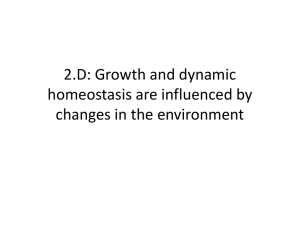GEOG244 Alt Stable States Discussion Summary
advertisement
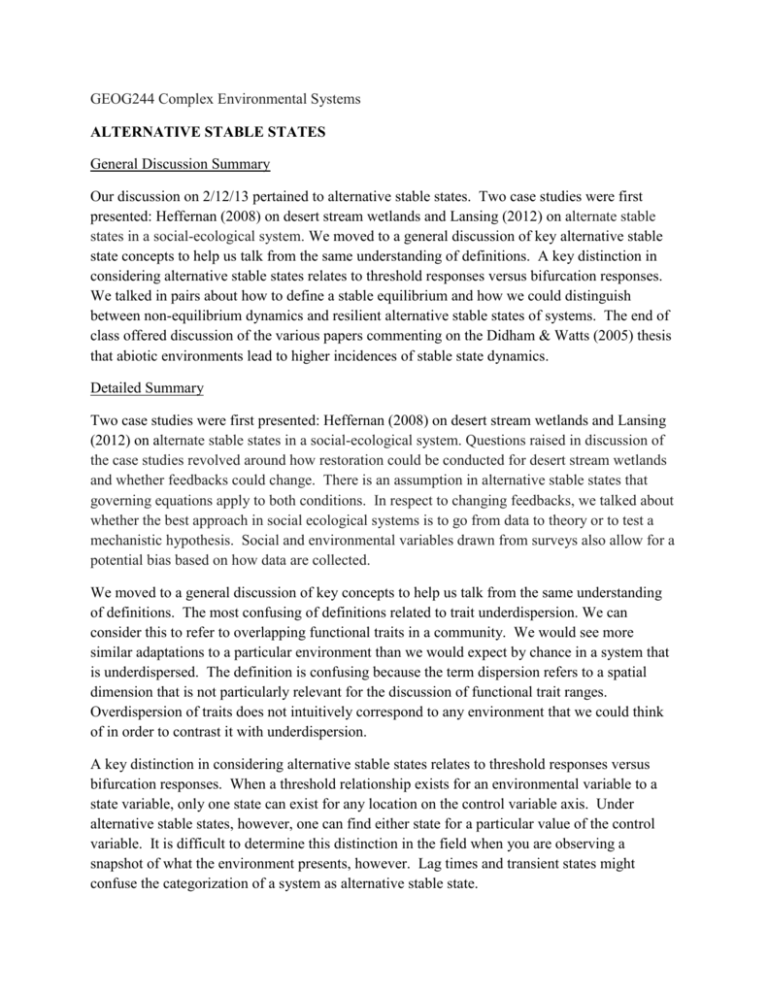
GEOG244 Complex Environmental Systems ALTERNATIVE STABLE STATES General Discussion Summary Our discussion on 2/12/13 pertained to alternative stable states. Two case studies were first presented: Heffernan (2008) on desert stream wetlands and Lansing (2012) on alternate stable states in a social-ecological system. We moved to a general discussion of key alternative stable state concepts to help us talk from the same understanding of definitions. A key distinction in considering alternative stable states relates to threshold responses versus bifurcation responses. We talked in pairs about how to define a stable equilibrium and how we could distinguish between non-equilibrium dynamics and resilient alternative stable states of systems. The end of class offered discussion of the various papers commenting on the Didham & Watts (2005) thesis that abiotic environments lead to higher incidences of stable state dynamics. Detailed Summary Two case studies were first presented: Heffernan (2008) on desert stream wetlands and Lansing (2012) on alternate stable states in a social-ecological system. Questions raised in discussion of the case studies revolved around how restoration could be conducted for desert stream wetlands and whether feedbacks could change. There is an assumption in alternative stable states that governing equations apply to both conditions. In respect to changing feedbacks, we talked about whether the best approach in social ecological systems is to go from data to theory or to test a mechanistic hypothesis. Social and environmental variables drawn from surveys also allow for a potential bias based on how data are collected. We moved to a general discussion of key concepts to help us talk from the same understanding of definitions. The most confusing of definitions related to trait underdispersion. We can consider this to refer to overlapping functional traits in a community. We would see more similar adaptations to a particular environment than we would expect by chance in a system that is underdispersed. The definition is confusing because the term dispersion refers to a spatial dimension that is not particularly relevant for the discussion of functional trait ranges. Overdispersion of traits does not intuitively correspond to any environment that we could think of in order to contrast it with underdispersion. A key distinction in considering alternative stable states relates to threshold responses versus bifurcation responses. When a threshold relationship exists for an environmental variable to a state variable, only one state can exist for any location on the control variable axis. Under alternative stable states, however, one can find either state for a particular value of the control variable. It is difficult to determine this distinction in the field when you are observing a snapshot of what the environment presents, however. Lag times and transient states might confuse the categorization of a system as alternative stable state. Other unresolved issues regarding alternative stable states include how to represent when we might not know all the relevant mechanisms involved. Times scales and spatial scales also pose challenges. Diatoms versus bare patches in mudflats, for example, might refer to alternative stable states. Or might the alternative stable states actually be a pattern versus no pattern condition? Local and global scales influence what actual state we might be discussing. Most of the class seemed to agree that feedbacks between biota and the physical environment are characteristic of alternative stable states. The definition of alternative stable states, however, does allow for feedbacks between organisms alone to result in two different states of the system. Competition alone does not typically sustain alternative stable states in the examples we had been discussing. We talked in pairs about tests that define a stable equilibrium and how we could distinguish between non-equilibrium dynamics and resilient alternative stable states systems. Questions of how we define the pristine state came up, especially as our human values infuse the declaration of such. Human values might be as dynamic as the ecology, and how to more fully account for that in our models is a challenge. Another idea about testing for equilibrium was to conduct manipulative experiments. A potential pitfall with this idea, though, is whether the research might introduce a new variable into the system that becomes a driver. Doing manipulations might allow latent feedbacks to emerge to change a dynamic that was previously structuring the system. However, manipulations for the sake understanding governing dynamics might be helpful. It is not easy to put all systems in the alternative stable states framework, as one pair was grappling with deciding threshold versus alternative stable states conditions. This is more difficult when multiple variables are important or where proximity/spatial relationships are key. Overall, time scale for observing different stable states will pose a challenge for managers who will most likely need to act before all the long term data might be collected and evaluated. Didham and Watts (2005) Paper The thesis of the D&W paper was that abiotic environments lead to higher incidences of stable state dynamics. The flow of ideas is: 1) Propagule limitation, 2) trait underdispersion, 3) stochastic priority effects, and 4) existence of alternative stable states (could be driven by competition or feedback on abiotic environment). D&W claim trait underdispersion happens in strongly stressed/abiotic environments due to an abiotic filter, not competitive interactions. Many of the papers responding to D&W focused on competition as an important structuring force for the communities. Priority effects are generally agreed to cause the alternative stable states, but this viewpoint is limited. Priority effects might not be the only causal factor for alternative stable states.
